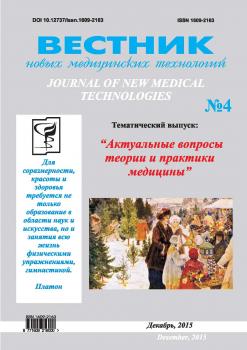The purpose of this work is to study surgical anatomy in the patients with inguinal hernias of various kinds. Material. This work is performed on 41 corpses with inguinal hernias. Topographic and anatomical dissection of the inguinal canal with measurement of the linear parameters of anatomical structures, histological examination of specimens of the internal oblique abdominal muscles, the transverse fascia of the abdomen were carried out. Results. The authors have studied the structure of the posterior wall of the inguinal canal in the patients with oblique, direct, supravesical and inguinal-scrotal hernias. At persons with direct and supravesical inguinal hernias, a deformation is observed, mainly, in the medial inguinal fossa and supravesical fossa, showing great value inguinal gap, bland crescent aponeurosis, thinning of the transverse fascia of the abdomen. Increase of deep inguinal rings is observed in persons with oblique inguinal hernias. Dystrophy of abdominal muscles has always with inguinal hernias, and it is pronounced in the patients with inguinal-scrotal hernias. Conclusions. At surgical treatment of patients with direct inguinal hernias it is necessary to carry out correction of a posterior wall of the inguinal canal, in the patients with oblique inguinal hernias the anterior wall of the inguinal canal has to be surely restored. In the application of mesh materials in patients with large inguinal hernias, the results of treatment are doomed to fail, because the endoprosthesis only closes hernial wall that when failure of muscle function will clearly increase.
inguinal canal, inguinal hernia, surgical anatomy.
1. Lavrova T.F. Klinicheskaya anatomiya i gryzhi peredney bryushnoy stenki. M.: Meditsina, 1979. 104 s.
2. Mikhaylova G.N. Novyy sposob khirurgicheskogo lecheniya pakhovykh gryzh: dis. … kand. med.nauk: 14.00.27. Voronezh, 2004. 91 s.
3. Nesterenko Yu.A., Gaziev R.M. Pakhovye gryzhi. Rekonstruktsiya zadney stenki pakhovogo kanala. M.: BINOM. Laboratoriya znaniy, 2005. 144 s.
4. Cavazzola L.T., Rosen M. J. Laparoscopic versus open inguinal hernia repair. Surg Clin North Am. 2013. Vol. 93. N 5. P. 1269-1279.
5. Fine A. Laparoscopic repair of inguinal hernia with biomimetic matrix. JSLS. 2012. Vol. 16. N 4. P. 564-568.
6. Jenkins J.T., O’Dwyer J.T. Inguinal hernias. BMJ. 2008. Vol. 336. N 7638. P. 269-272.
7. Kulacoglu H. Current options in inguinal hernia repair in adult patients. Hippokratia. 2011. Vol. 15. N 3. P. 223-231.
8. Read R. C. Herniology: past, present, and future. Hernia. 2009. Vol. 13. N 6. P. 577-580.





